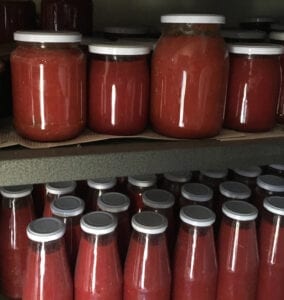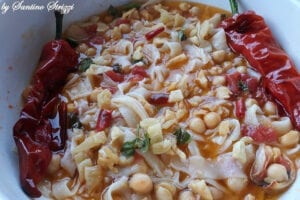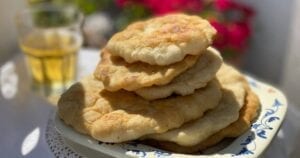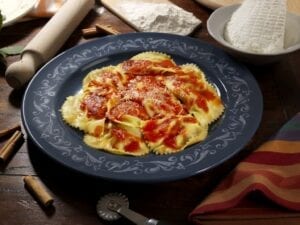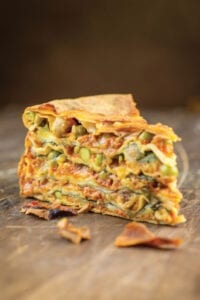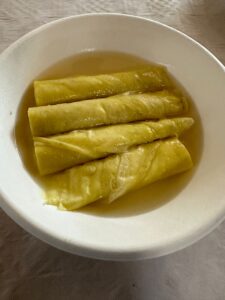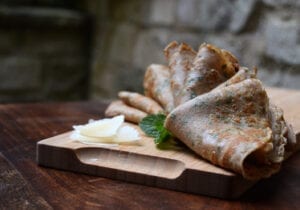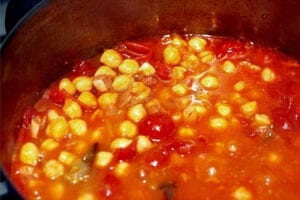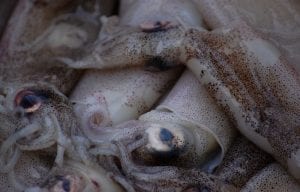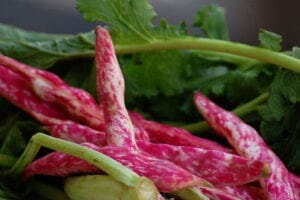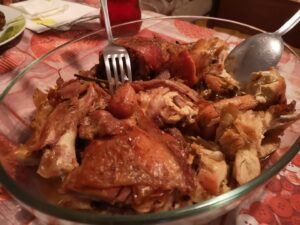
Fever, February, Fishbones & Fennel seeds are not things that grab you as having a lot in common, but on this ever-steep learning curve of Abruzzo culture, I also understand the history of words in my native English.
The 3rd of February is the feast day of Armenian San Biagio (Saint Blaise). He was a hermit who was fed by the animals of a nearby forest and who he, in turn, fed when they were ill. His fame stems from melting a fishbone that had stuck in a child’s throat and he’s now the patron saint of throat afflictions. He’s more often than not depicted with wild animals in frescos in churches but sometimes as a pair of wool combs as he died rather nastily by these tearing him apart to “earn” his martyrdom.
Of course, it is no coincidence that his miracle is celebrated in February. The original meaning of February stems from the Latin for fever, febris, and it’s this time of year that the Romans had their februa ‘purifying’ festival. This built on the idea that fevers were positive, a purifying test, and if you got through you’d be all set for sunny spring. Numa Pompilius, King of Rome in c700bc built this purification festival into a month when 10 months became 12 in the Roman calendar.
Yesterday evening our Italian teacher’s mamma kindly sent us these Ciambella di S. Biagio to start the day with; children are expected to eat a whole one in protection for the coming year. If they are diligent and make it to church, olio santo, the best of the oil from the previous harvest which is still given to the local priest and used in blessings is rubbed onto the adam’s apple.
The ciambella or taralli are surprisingly moreish despite their dryness, great dipped in a small glass of wine, and strangely great coffee or Chai tea! Their secret protective ingredient is fennel seeds. These seeds are considered a traditional cure for fevers, hot flushes, and bronchial problems and swelling. Locally I have had fennel seeds popped in the traditional Easter cake and fried with sausages and cabbage and been offered a tea infusion with them which is lovely. If fennel seeds are too crunchy you can substitute them with another popular option, anice.
The recipes for these biscuits vary from village to village, and probably a little different to Abruzzo’s most popular 3-day sagra for St Biagio in Castiglione a Casauria. Here the Ciambella di S. Biagio are dipped in an ancient local wine called Moscato di Castiglione. In Taranta Peligna, the unsalted biscuits created to celebrate their patron saint are known as Panicelle, which resemble the Saint giving a traditional blessing, here’s the local community making them for their celebration.

Ciambella di S. Biagio
Ingredients
- 5 Eggs
- 5 tbsp Olive Oil
- 5 tbsp Caster Sugar
- 2 tbsp Fennel Seeds (substitute anice if you prefer a smoother finish)
- Flour – add until you have a stiff dough that resembles that for pasta
Instructions
- Mix the eggs, oil and sugar together, and slowly add flour till you get a pasta like dough.
- Pull off a small piece of the dough and roll into a worm like shape with your hands and then join each end together.
- Have a pan of boiling water ready and literally add your biscuits in for 5 minutes, this acts as a starch tightener and helps them keep their shape.
- Bake in the oven at 180 C for approximately 1 hour or until they look toasty.


